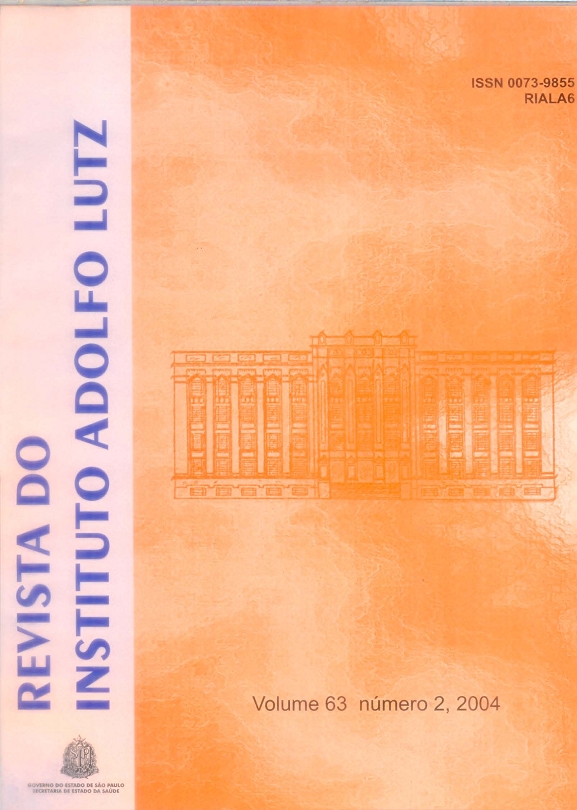Abstract
Enrichment of foods with folic acid has turned out to be a common practice around the world. Recently, in
Brazil, the National Agency for Sanitary Surveillance (ANVISA) has brought into public notice a resolution
on mandatory enrichment of wheat and corn flour with folic acid. In the face of this, reliable analytical
methodologies for to determinate folic acid in flours have to be established and standardized. The aim of
the present study was to validate a methodology for folic acid analyses in enriched wheat and corn flour
carried out by High Performance Liquid Chromatography. Folic acid was extracted from the flours using
potassium hydroxide solution and acetonitrile. The extract was purified with trichloroacetic acid. For
chromatographic separation a gradient system composed by acid solution/acetonitrile was used as mobile
phase, and a C18 column was employed for vitamin separation and elution. Folic acid detection was made
at 290nm and its quantification was performed by external standardization. The evaluated method was
efficient being the recovery rates between 92 and 98%; the method presented good repeatibility (CV 0.60
to 0.98%), and detection and quantification limits were 1.3ng/g and 1.6ng/g, respectively.
References
1. Anvisa - Agência Nacional de Vigilância Sanitária. www.anvisa.org.br. Consulta em 20/04/2004.
2. Brody, T. Folic acid In: Machlin, L. J. Handbook of vitamins. 2ed. Revised and Expanded. New York: Marcel Dekker Inc.; 1994. 595 p.
3. Caulcutt, R.; Brody, R. Statistic for Analytical Chemists. 1st. Chapman and Hall, Londres; 1983. 253p.
4. Carvalho, P. R. N. Enriquecimento de Alimentos. Primeiro seminário brasileiro de alimentos enriquecidos. Campinas: Instituto de Tecnologia de Alimentos, 1994. p. 1-7.
5. Castilla, E. E. et al. ECLAMC Informs. Frontiers in Fetal Health 2(7):4-23, 2000. www.sickkids.on.ca/ FrontiersinFetalHealth/FFHJanuary2001.asp#Pastuszak. Consulta em 10/03/2004.
6. Catharino, R. R.; Godoy, H. T. Avaliação das condições experimentais de CLAE na determinação de ácido fólico em leites enriquecidos. Ciênc. Tecnol. Aliment., 23(3):389-95, 2003.
7. Cort, W. M. et al. Nutrient stability of fortified cereal products. Food Techn. 30: 52-62, 1976.
8. Cortes, F. et al. Impact of wheat flour fortification with folic acid on preservation of neural tube defects (NTD) in Chile. 2001. http://mail.medacad.or/www.ichg2001.org/abstracts/services.htm. Consulta
em 10/03/2004.
9. Crane, N. T. et al. Evaluating food fortification options: general principles revisited with folic acid. Am. J. Pub. Health 85(5): 660-6, 1995.
10. Cunniff, P. (Ed) Official Methods of Analysis of AOAC International. 17 ed. AOAC International, Gaithersburg, Maryland; 1997. p. 45.1 – 45.69.
11. Daly, S. et al. Minimum effective dose of folic acid for food fortification to prevent neural-tube defects. Lancet, 350(9092): 1666-9, 1997.
12. Devlin, T. M. Manual de Bioquímica com correlações clínicas.1ed. Ed. Edgard Blücher; 1997, 1007p.
13. Flour Fortification. www.emro.who.int/nfs/FlourFortification.htm. Consulta em 10/02/2004.
14. Gassin, A. L. Aspects réglementaires de lénrichissement en France et en Europe. Cah. Nutrition diétics, 26(1): 85-8, 1991.
15. Green, J.M. A practical Guide to Analytical Method Validation. Anal. Chem. 68: 1197-1203, 1996.
16. Gregory III, J. F. Chemical and nutritional aspects of folate research: analytical procedures, methods of folate synthesis, stability, and bioavailability of dietary folates . Adv. Food Nutr. Res., 33: 1-101, 1989.
17. Hawkes, J. G.; Villota, R. Folates in Foods: reactivity, stability during processing, and nutritional implications. Food Sci. Nutr., 28(6): 439-538, 1989.
18. Hirsch, S. et al. The Chilean Flour Folic Acid Fortification Program Reduces Serum Homocysteine Levels and Masks Vitamin B12 Deficiency in Elderly People. J. Nutr., 132: 289-91, 2002.
19. Iwatani, Y.; Arcot, J.; Shrestha, A. K., Determination of folate contents in some Australian vegetables. J. Food Comp. Anal., 16: 37-48, 2003.
20. Katzung, B. G. Farmacologia básica e clínica. 5ed. São Paulo: Guanabara Koogans; 1994. 755p.
21. Keagy, P. M.; Stokstad, L. R.; Fellers, D. A. Folacin stability during bread processing and family flour storage. Cereal Chem., 52: 348-56, 1975.
22. Konings, E. J. M. A validated liquid chromatographic method for determining folates in vegetables, milk powder, liver and flour. J. AOAC Int., 82(1): 119-27, 1999.
23. Lima, J.A.; Catharino, R.R.; Godoy, H.T. HPLC methodology for folic acid determination in enriched wheat flour and bread. Tec. Molitoria Intern., 55: 151-8, 2004.
24. Malinow, M. R. et al. Reduction of plasma homocyst(e)ine levels by breakfast cereal fortified with folic acid in patients with coronary disease. New Engl. J. Med., 338(15): 1009-15, 1998.
25. MaxwelL, D. P .E. Cost-control implications of nutrients fortification. Prep. Food 87-8, 1990.
26. Moshfegh, A. J. et al. Folate intakes. Food Surv. Res. Group. BHNRC, ARS, USDA, Riverdale, MD, USA. 1998.
27. Osseyi, E.S.; Wehling, R.L.; Albrecht, J.A. Liquid Chromatographic Method for Determining Added Folic Acid in Fortified Cereal Products. J. Chromatogr. A, 826(2): 235-40, 1998.
28. Ranum, P. Cereal enrichment. In: Handbook of Cereals Science and Technology. Ed. Lowrenz, New York, 1991, p.882.
29. Tsai, M. Y. et al. Genetic cause of mild hiperhomocysteinemia in patients with premature occlusive coronary artery disease. Atherosc. 143: 163-165, 1999.
30. Vahteristo, L.T.; Ollilainen, V.; Varo, P. Liquid chromatographic determination of folate monoglutamates in fish, meat, egg and dairy products consumed in Finland. J. AOAC Int., 80 (2), 373-8, 1997.
31. Walter, P. Vitamin requeriments and enrichment of foods. Food Chem. 49: 113-117, 1994.
32. Willcox, J.K.; Catignani, G.L.; Lazarus, S. Tomatoes and cardiovascular health. Critical Reviews in Food Sci. Nutr., 43(1): 1-18, 2003.

This work is licensed under a Creative Commons Attribution 4.0 International License.
Copyright (c) 2004 Revista do Instituto Adolfo Lutz
